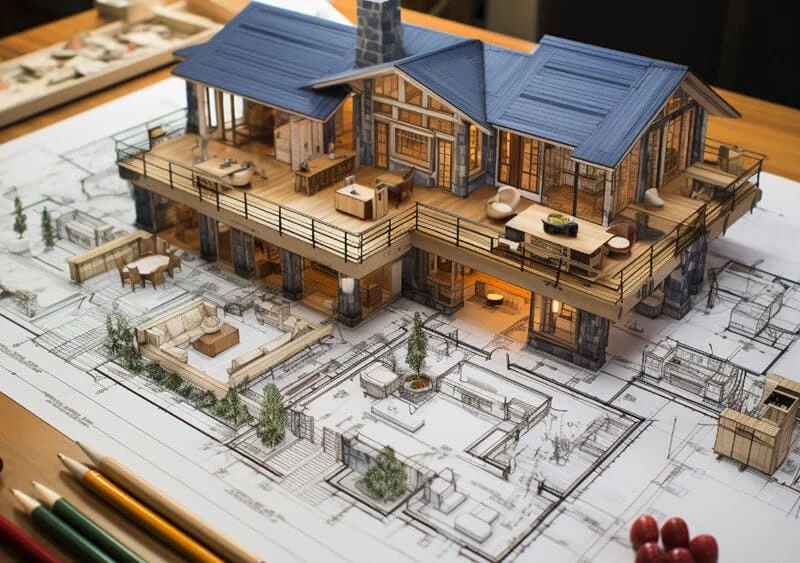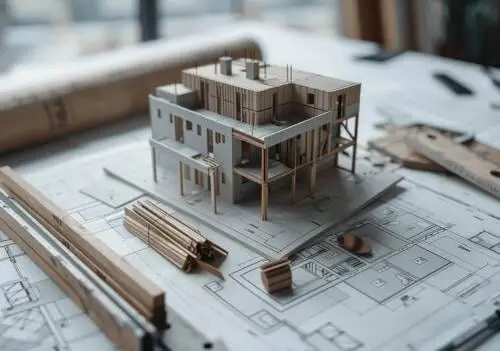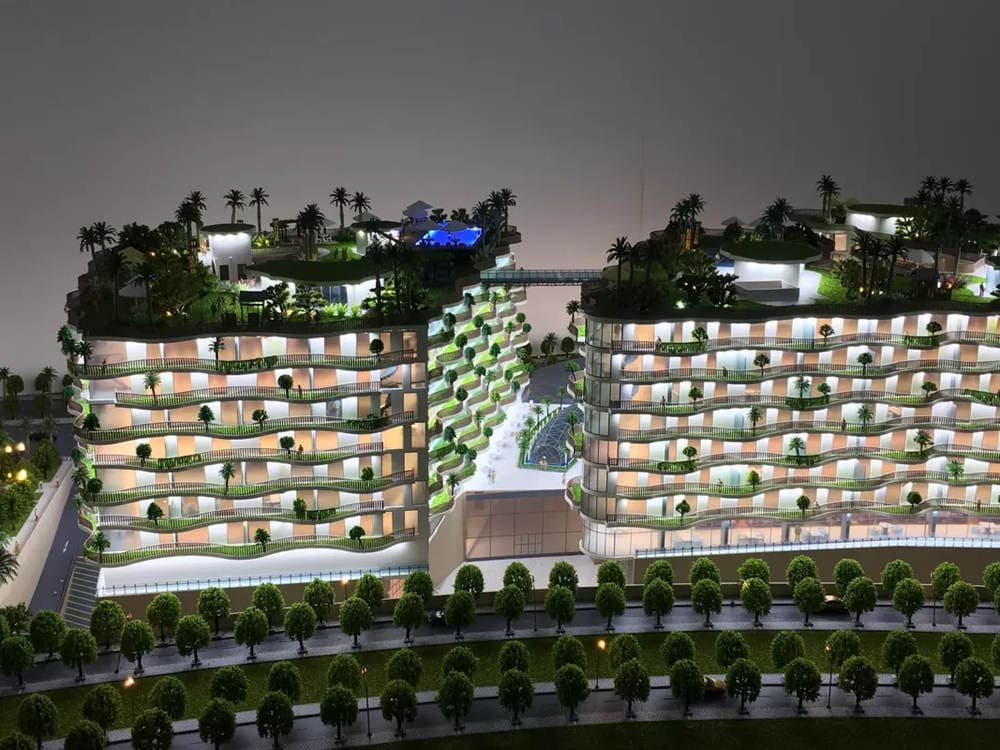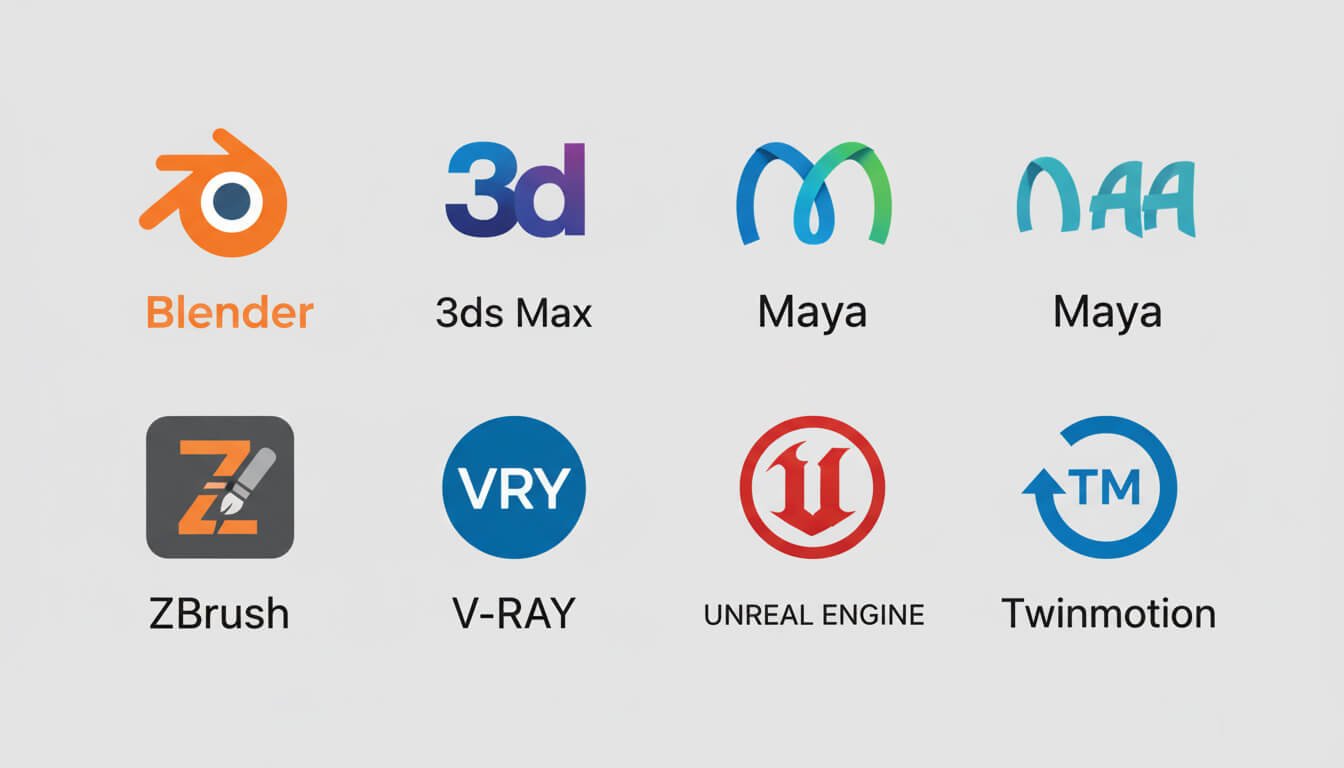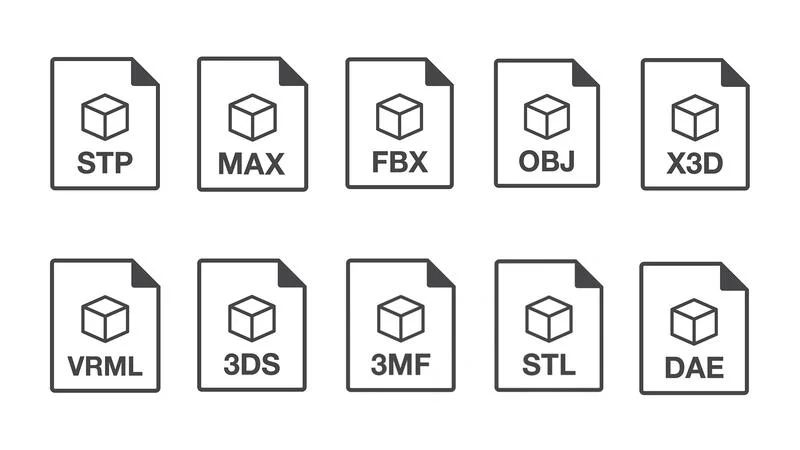Ένα γενικό σχέδιο είναι κάτι περισσότερο από ένα σύνολο σχεδίων; είναι το σχέδιο για μια μελλοντική κοινότητα. Αλλά πώς μπορείτε να πάρετε ένα όραμα που εκτείνεται σε εκατοντάδες στρέμματα, δεκάδες κτίρια, και δεκαετίες ανάπτυξης και να το κάνουν άμεσα κατανοητό? Χτίζετε μια γέφυρα μεταξύ του σχεδίου και της πίστης. Αυτή η γέφυρα είναι το μοντέλο του masterplan. Αυτός ο οδηγός εξερευνά την τέχνη και την επιστήμη πίσω από αυτά τα απίστευτα εργαλεία, δείχνοντας πώς μετατρέπουν σύνθετα δεδομένα σε απτά, κοινή πραγματικότητα που εμπνέει τους επενδυτές, εξασφαλίζει εγκρίσεις, και αιχμαλωτίζει τους μελλοντικούς κατοίκους.
«Εάν αποτύχετε να προγραμματίσετε, Σχεδιάζετε να αποτύχετε. "
Αυτή η διαχρονική σοφία του Benjamin Franklin αιχμαλωτίζει τέλεια την ψυχή της σύγχρονης ανάπτυξης. Αλλά τι συμβαίνει όταν ένα σχέδιο είναι τόσο τεράστιο, τόσο πολύπλοκο, που είναι δύσκολο για κανέναν να το καταλάβει πραγματικά? Πώς μεταμορφώνετε ένα εκτεταμένο όραμα για μια νέα συνοικία της πόλης, μια παραθαλάσσια κοινότητα, ή μια πανεπιστημιούπολη σε κάτι που μπορούν να δουν όλοι, επαφή, και πιστέψτε σε? Χτίζεις μια γέφυρα. Μια γέφυρα μεταξύ του σχεδίου και της πραγματικότητας, μεταξύ δεδομένων και ανθρώπινης εμπειρίας.
Αυτή η γέφυρα είναι η μοντέλο γενικού σχεδίου.
Αυτό δεν είναι απλώς ένα μικροσκοπικό, στατικό αντίγραφο κτιρίων. Ένα σύγχρονο μοντέλο master plan είναι μια εξελιγμένη συσκευή αφήγησης, ένα ισχυρό εργαλείο μηχανικής, και ένα εκπληκτικό έργο τέχνης όλα σε ένα. Είναι εκεί όπου η τεχνολογία αιχμής όπως η τρισδιάστατη εκτύπωση και η επαυξημένη πραγματικότητα συναντά τη διαχρονική τέχνη της κατασκευής μοντέλων. Είναι το πιο αποτελεσματικό εργαλείο για να ζωντανέψει ένα μεγάλο όραμα. Για μια πλήρη επισκόπηση όλων των τύπων μοντέλων, ξεκινήστε με τη σελίδα του θεμελιώδους πυλώνα μας: Ο τελικός οδηγός για αρχιτεκτονικά μοντέλα υψηλού επιπέδου.
Αυτός ο περιεκτικός οδηγός θα σας καθοδηγήσει σε κάθε βήμα αυτού του ταξιδιού. Θα διερευνήσουμε τη στρατηγική σκέψη που εντάσσεται σε ένα γενικό σχέδιο, η περίπλοκη διαδικασία κατασκευής ενός φυσικού μοντέλου, και τις απίστευτες τεχνολογίες που κάνουν τα σημερινά μοντέλα πιο διαδραστικά και ενημερωτικά από ποτέ. Από τις αρχικές ερωτήσεις που πρέπει να κάνετε μέχρι τον τελικό ποιοτικό έλεγχο, θεωρήστε αυτόν τον οδικό σας χάρτη για την κατανόηση και τη δημιουργία μοντέλων βασικών σχεδίων που εμπνέουν, πληροφορώ, και οδηγούν τις αποφάσεις.
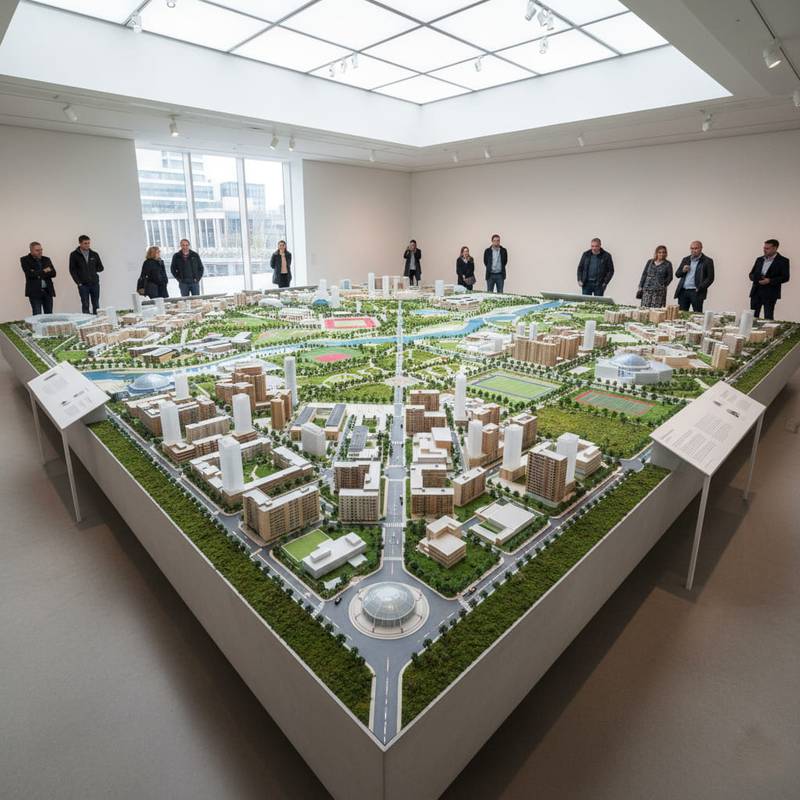
Πίνακας περιεχομένων
Θεμελιώδης Κατανόηση: Τι είναι ένα Master Plan και γιατί τα μοντέλα έχουν σημασία?
Πριν βουτήξουμε στα παξιμάδια και τα μπουλόνια της μοντελοποίησης, πρέπει να κατανοήσουμε τα θεμέλια πάνω στα οποία έχει χτιστεί. Τι ακριβώς είναι ένα master plan, και γιατί το φυσικό μοντέλο έχει γίνει τόσο απαραίτητο μέρος της διαδικασίας?
Τι είναι ένα Master Plan?
Σκεφτείτε ένα γενικό σχέδιο όχι ως τελικό, άκαμπτος χάρτης, αλλά ως μακροπρόθεσμη, στρατηγικό χάρτη πορείας. Είναι ένα δυναμικό έγγραφο που παρέχει ένα ολοκληρωμένο πλαίσιο για την καθοδήγηση της μελλοντικής ανάπτυξης και ανάπτυξης μιας συγκεκριμένης περιοχής. Αυτό μπορεί να είναι οτιδήποτε, από μια νέα γειτονιά της πόλης ή μια εταιρική πανεπιστημιούπολη μέχρι μια αναζωογονημένη βιομηχανική ζώνη ή ένα μεγάλο δημόσιο πάρκο. Έχει να κάνει με το να κάνεις έξυπνο, συνεκτικές συνδέσεις μεταξύ των κτιρίων, κοινωνικές ρυθμίσεις, και του περιβάλλοντος περιβάλλοντος.
Ένας ορισμός πέρα από το προσχέδιο
Σε αντίθεση με έναν απλό κωδικό ζώνης, που επιβάλλει κανόνες, ένα γενικό σχέδιο αρθρώνει α όραμα. Εξετάζει πώς θα λειτουργεί και θα αισθάνεται ένας τόπος για δεκαετίες, λαμβάνοντας υπόψη την αύξηση του πληθυσμού, οικονομικές αλλαγές, ανάγκες μεταφοράς, και περιβαλλοντική βιωσιμότητα. Είναι η σκέψη της μεγάλης εικόνας που διασφαλίζει ότι τα μεμονωμένα έργα συνεργάζονται για να δημιουργήσουν μια συνοχή, λειτουργικός, και όμορφο ολόκληρο.
Ποια είναι τα βασικά στοιχεία ενός Master Plan?
Ένα πραγματικά αποτελεσματικό γενικό σχέδιο είναι μια συμφωνία πολλών αλληλένδετων μερών. Ενώ κάθε έργο είναι μοναδικό, οι περισσότεροι θα αντιμετωπίσουν αυτά τα κρίσιμα στοιχεία:
| Συστατικό | Περιγραφή | Βασική εστίαση |
|---|---|---|
| Χρήση γης | Καθορίζει τι μπορεί να κατασκευαστεί πού. Περιγράφει ζώνες για κατοικίες, εμπορικός, βιομηχανικός, και ψυχαγωγικούς σκοπούς. | Πυκνότητα, ύψη κτιρίου, ανάμειξη χρήσεων. |
| Μεταφορά & Κυκλοφορία | Σχεδιάζει το δίκτυο για το πώς κινούνται οι άνθρωποι και τα αγαθά. Αυτό περιλαμβάνει δρόμους, δημόσια συγκοινωνία, ποδηλατόδρομους, και πεζόδρομους. | Συνδεσιμότητα, προσιτότητα, μείωση της συμφόρησης. |
| Βοηθητικά προγράμματα & Υποδομή | Περιγράφει τα βασικά συστήματα που υποστηρίζουν την κοινότητα, όπως η παροχή νερού, απόβλητα, ηλεκτρισμός, και επικοινωνιών. | Ικανότητα για μελλοντική ανάπτυξη, ελαστικότητα. |
| Δημόσιες Υπηρεσίες & Εγκαταστάσεις | Αντιμετωπίζει τις ανάγκες της κοινότητας σχεδιάζοντας τα σχολεία, νοσοκομεία, πυροσβεστικοί σταθμοί, βιβλιοθήκες, και πάρκα. | Τοποθεσία, ικανότητα, και προσβασιμότητα για όλους τους κατοίκους. |
| Περιβάλλο & Ανοιχτός χώρος | Λαμβάνει υπόψη τον οπτικό χαρακτήρα και την οικολογική υγεία της περιοχής. Ενσωματώνει χώρους πρασίνου, προστατεύει τα φυσικά χαρακτηριστικά, και ενισχύει τη βιοποικιλότητα. | Βιότης, ποιότητα ζωής, μια αίσθηση του τόπου. |
Τι είναι ένα μοντέλο Master Plan?
Αν το master plan είναι το σενάριο, το μοντέλο master plan είναι η παράσταση πρεμιέρας. Είναι ένα κλιμακούμενη φυσική ή ψηφιακή αναπαράσταση ολόκληρου του σχεδίου, σχεδιασμένο για να κάνει το όραμα απτό. Μπορείτε να περπατήσετε γύρω από αυτό, δείτε το από διαφορετικές οπτικές γωνίες, και να κατανοήσουν τις χωρικές σχέσεις με τρόπο που κανένα 2D σχέδιο ή οθόνη υπολογιστή δεν μπορεί να αναπαραχθεί. Είναι το κύριο οπτικό εργαλείο που χρησιμοποιείται για την επικοινωνία του έργου σε όλους τους εμπλεκόμενους.
Γιατί τα μοντέλα Master Plan είναι απαραίτητα στον σημερινό κόσμο?
Στην εποχή των ψηφιακών πάντων, ίσως αναρωτιέστε γιατί ένα φυσικό μοντέλο είναι ακόμα τόσο σημαντικό. Η αλήθεια είναι, είναι πιο σημαντικά από ποτέ. Η δύναμή τους έγκειται στην ικανότητά τους να γεφυρώνουν το χάσμα μεταξύ πολύπλοκων δεδομένων και της ανθρώπινης διαίσθησης.
- Ολοκληρωμένη Οπτικοποίηση: Ένα μοντέλο προσφέρει ένα ξεκάθαρο, ολιστική, 3Δ άποψη του έργου. Δείχνει πώς σχετίζονται τα κτίρια μεταξύ τους, πώς ρέουν οι ανοιχτοί χώροι, και πώς η όλη ανάπτυξη ταιριάζει στο περιβάλλον της. Μετατρέπει τις αφηρημένες γραμμές σε μια σελίδα σε έναν κόσμο μινιατούρα.
- Επικύρωση σχεδιασμού & Επίλυση προβλημάτων: Τα μοντέλα είναι εργαλεία εργασίας. Οι αρχιτέκτονες και οι σχεδιαστές τα χρησιμοποιούν για να εντοπίσουν πιθανά προβλήματα έγκαιρα. Είναι ένας νέος πύργος που ρίχνει πολύ σκιά? Είναι ένας πεζόδρομος που προκαλεί σύγχυση? Ο άνεμος θα είναι ένα πρόβλημα ανάμεσα σε δύο ψηλά κτίρια? Το μοντέλο βοηθά στην απάντηση σε αυτές τις ερωτήσεις πριν από την τοποθέτηση ενός μόνο τούβλου, εξοικονομώντας χρόνο και χρήμα.
- Ξεκλείδωμα εμπλοκής με ενδιαφερόμενα μέρη: Ένα γενικό σχέδιο περιλαμβάνει πολλούς διαφορετικούς ανθρώπους: επενδυτές, κυβερνητικοί αξιωματούχοι, μηχανικός, και το κοινό. Ένα μοντέλο μιλάει μια παγκόσμια γλώσσα. Απλοποιεί πολύπλοκες ιδέες, καθιστώντας ευκολότερο για όλους να κατανοήσουν την πρόταση, παρέχουν ουσιαστική ανατροφοδότηση, και ενθουσιαστείτε με το έργο.
- Ένα ισχυρό εργαλείο μάρκετινγκ και πωλήσεων: Για προγραμματιστές ακινήτων, ένα μοντέλο γενικού σχεδίου είναι ένα απαραίτητο στοιχείο. Τοποθετημένη σε μια γκαλερί πωλήσεων, επιτρέπει στους πιθανούς αγοραστές να δουν όχι μόνο ένα διαμέρισμα, αλλά ολόκληρος ο τρόπος ζωής που αγοράζουν—τα πάρκα, τα μαγαζιά, τη σύνδεση με τη συγκοινωνία, και η συνολική αίσθηση της κοινότητας. Αυτή είναι μια βασική στρατηγική που διερευνούμε Πώς ένα κορυφαίο μοντέλο μπορεί να διπλασιάσει τις πωλήσεις σας.
- Απόκτηση ανταγωνιστικού πλεονεκτήματος: Σε έντονα ανταγωνιστικές αγορές όπως το Ντουμπάι ή όταν διεκδικείτε έργα κύρους, Ένα καινοτόμο και εντυπωσιακό μοντέλο μπορεί να είναι ο αποφασιστικός παράγοντας. Η ομάδα πίσω από το νικητήριο σχέδιο για την πολιτιστική περιοχή West Kowloon του Χονγκ Κονγκ, για παράδειγμα, χρησιμοποίησε το μοντέλο του master plan στην τελική παρουσίαση για να εξασφαλίσει το έργο. Ένα εξαιρετικό μοντέλο είναι επίσης βασικός παράγοντας όταν εσείς χρησιμοποιήστε εννοιολογικά μοντέλα για να κερδίσετε διαγωνισμούς.
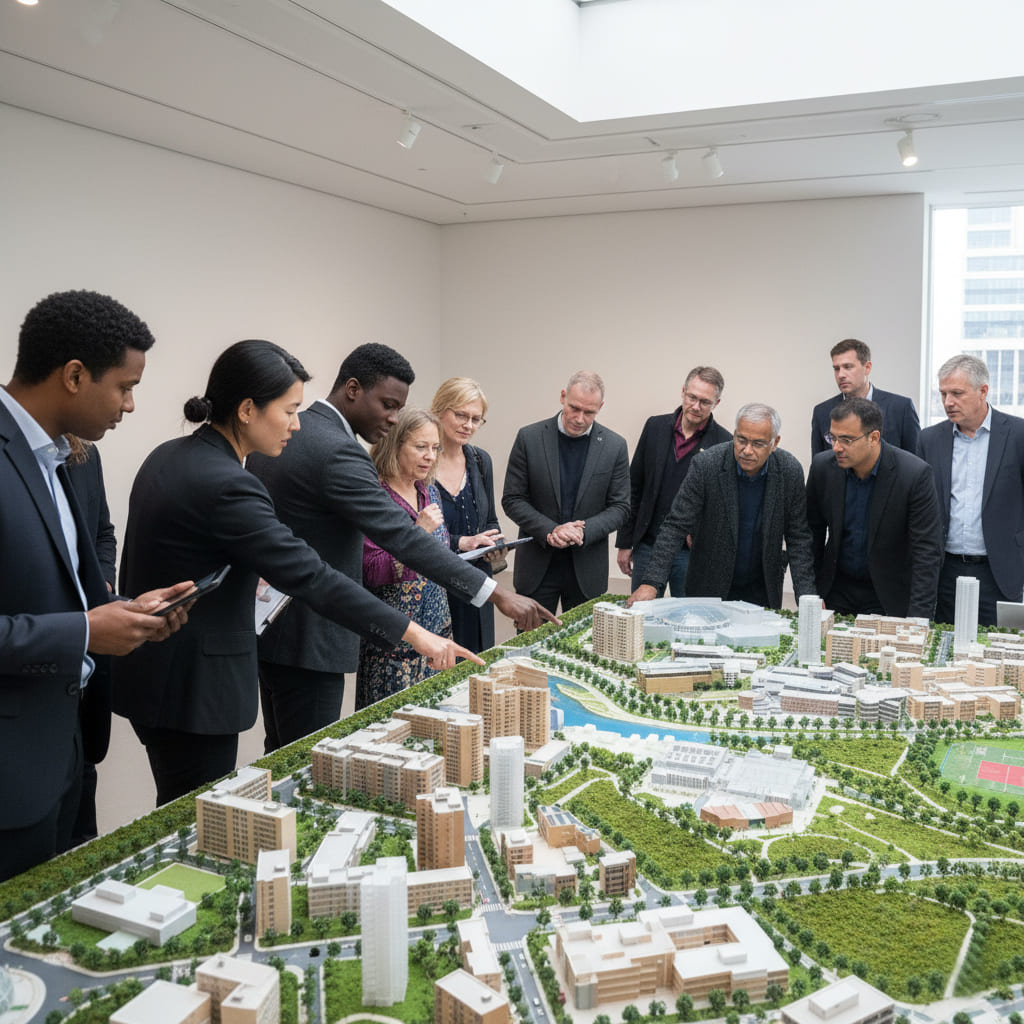
Το Στρατηγικό Πλαίσιο: Πώς να αναπτύξετε ένα επιτυχημένο κύριο σχέδιο
Ένα υπέροχο μοντέλο μπορεί να κατασκευαστεί μόνο από ένα υπέροχο σχέδιο. Και ένα υπέροχο σχέδιο ξεκινά με το να κάνεις τις σωστές ερωτήσεις. Πριν ξεκινήσουν οι εργασίες σχεδιασμού, πρέπει να ξεδιπλωθεί μια βαθιά στρατηγική διαδικασία για να διασφαλιστεί ότι το έργο είναι βιώσιμο, ανεκτός, και εξυπηρετεί πραγματικά τον σκοπό του.
Ποιες βασικές ερωτήσεις πρέπει να απαντηθούν πριν ξεκινήσετε ένα γενικό σχέδιο?
Η μετάβαση στο σχεδιασμό χωρίς σαφή στρατηγική είναι μια συνταγή καταστροφής. Τα πιο επιτυχημένα έργα ξεκινούν με μια φάση έντονης αμφισβήτησης και ανάλυσης. Ως ειδικός σε αυτόν τον τομέα, Πάντα καθοδηγώ τους πελάτες μου σε αυτές τις κρίσιμες ερωτήσεις για να οικοδομήσουμε μια γερή βάση.
| # | Στρατηγικό ερώτημα | Γιατί είναι κρίσιμο |
|---|---|---|
| 1 | Ποιοι είναι οι Βασικοί Στόχοι του Έργου? | Στοχεύετε στην οικονομική ανάπτυξη, αναζωογόνηση μιας κοινότητας, ή δημιουργία μιας βιώσιμης όασης? Ο καθορισμός των πρωταρχικών στόχων σας διατηρεί όλο το έργο εστιασμένο. |
| 2 | Ποιοι είναι οι ενδιαφερόμενοι και ποιες είναι οι ανάγκες τους? | Ένα έργο πρέπει να εξισορροπεί τις ανάγκες της τοπικής αυτοδιοίκησης, προγραμματιστές, ιδιοκτήτες επιχειρήσεων, και κατοίκων. Η κατανόηση των ανταγωνιστικών συμφερόντων τους είναι το κλειδί για τη δημιουργία ενός σχεδίου που κερδίζει ευρεία υποστήριξη. |
| 3 | Ποιες είναι οι προϋποθέσεις και οι περιορισμοί του ιστότοπου? | Κάθε ιστότοπος είναι μοναδικός. Πρέπει να αναλύσετε την τοπογραφία του, κλίμα, εδαφολογικές συνθήκες, υπάρχουσα υποδομή, και τυχόν ιστορικά ή πολιτιστικά χαρακτηριστικά. Το σχέδιο πρέπει να ανταποκρίνεται σε αυτές τις πραγματικότητες. |
| 4 | Ποιοι είναι οι Περιβαλλοντικοί Στόχοι και οι Στόχοι Αειφορίας? | Πώς θα επηρεάσει το έργο το περιβάλλον? Ένα σύγχρονο γενικό σχέδιο πρέπει να ενσωματώνει βιώσιμες πρακτικές όπως η ενεργειακή απόδοση, διαχείριση απορριμμάτων, χώρους πρασίνου, και τις ανανεώσιμες πηγές ενέργειας από την πρώτη στιγμή. |
| 5 | Πώς θα υποστηρίξει το σχέδιο τη μελλοντική ανάπτυξη και προσαρμοστικότητα? | Οι πόλεις δεν είναι στατικές. Ένα καλό σχέδιο είναι ευέλικτο. Επιτρέπει αλλαγές στη ζήτηση της αγοράς, τεχνολογία, και τις ανάγκες της κοινότητας με την πάροδο του χρόνου. Η προσαρμοστικότητα εξασφαλίζει μακροπρόθεσμη συνάφεια. |
| 6 | Ποιος είναι ο μακροπρόθεσμος αντίκτυπος στην κοινότητα? | Θα βελτιώσει το έργο την ποιότητα ζωής των κατοίκων;? Θα δημιουργήσει θέσεις εργασίας, παρέχουν οικονομικά προσιτή στέγαση, ή να προσφέρει νέες δημόσιες ανέσεις? Ένα επιτυχημένο σχέδιο χτίζει μια ισχυρότερη κοινότητα. |
| 7 | Ποιες είναι οι οικονομικές και οικονομικές εκτιμήσεις? | Κάθε γενικό σχέδιο απαιτεί σημαντικές επενδύσεις. Πρέπει να έχετε ξεκάθαρο προϋπολογισμό, στρατηγική χρηματοδότησης, και κατανόηση της μακροπρόθεσμης οικονομικής βιωσιμότητας του έργου. Αυτό επηρεάζει άμεσα τον προϋπολογισμό για εργαλεία όπως το μοντέλο, ένα θέμα που καλύπτουμε Τιμολόγηση μοντέλου αποσυσκευασίας. |
| 8 | Τι είναι το Χρονοδιάγραμμα και η Στρατηγική Φάσης? | Τα μεγάλα έργα κατασκευάζονται συχνά σε φάσεις για πολλά χρόνια. Ένα ρεαλιστικό χρονοδιάγραμμα και μια λογική στρατηγική φάσης είναι απαραίτητα για τη διαχείριση της κατασκευής και την ελαχιστοποίηση των διαταραχών. |
Ποιος απαρτίζει μια ομάδα Master Planning?
Ο κύριος προγραμματισμός είναι ένα ομαδικό άθλημα. Απαιτεί μια διαφορετική ομάδα ειδικών, ο καθένας φέρνει την πείρα του στο τραπέζι. Ενώ η ακριβής ομάδα ποικίλλει, ένα τυπικό έργο θα περιλαμβάνει:
- Αρχιτέκτων / Master Planner: Συχνά ο οδηγός του έργου, είναι ειδικευμένοι στο χωροταξικό σχεδιασμό και διαχειρίζονται τη συνολική όραση.
- Αρχιτέκτονας Τοπίου: Σχεδιάζει τους ανοιχτούς χώρους, πάρκα, και πράσινες υποδομές, δένοντας όλο το σχέδιο μαζί.
- Σύμβουλος Σχεδιασμού: Περιηγείται στον περίπλοκο κόσμο των κανονισμών, πολιτικές, και δέσμευση της κοινότητας.
- Πολιτικοί Μηχανικοί και Μηχανικοί Αυτοκινητοδρόμων: Σχεδιάστε τους δρόμους, υπηρεσίες κοινής ωφέλειας, και άλλες βασικές υποδομές.
- Περιβαλλοντικοί Σύμβουλοι: Ειδικοί σε τομείς όπως η βιοποικιλότητα, επίδραση άνθρακα, και της ρύπανσης, διασφαλίζοντας ότι το έργο είναι βιώσιμο.
- Ιστορικός Σύμβουλος: Αν ο χώρος έχει ιστορική σημασία, αυτός ο ειδικός διασφαλίζει ότι γίνεται σεβαστή και ενσωματωμένη σωστά.
- Επιμετρητής Ποσοτήτων / Σύμβουλος Κόστους: Διαχειρίζεται τον προϋπολογισμό και διασφαλίζει ότι το έργο παραμένει οικονομικά βιώσιμο.
Ποια είναι η Βήμα-Βήμα Διαδικασία για τη Δημιουργία του Εγγράφου του Master Plan?
Μόλις απαντηθούν τα στρατηγικά ερωτήματα και η ομάδα είναι στη θέση της, ξεκινά η διαδικασία δημιουργίας του πραγματικού γενικού σχεδίου. Είναι ένα επαναληπτικό ταξίδι έρευνας, σχέδιο, και τελειοποίηση.
- Στάδιο 1: Αρχική Αξιολόγηση και Έρευνα. Αυτή είναι η βαθιά κατάδυση. Η ομάδα διεξάγει εις βάθος συζητήσεις με τον πελάτη, μελετά τις δημογραφικές τάσεις, και διενεργεί προκαταρκτικές περιβαλλοντικές και οικονομικές αξιολογήσεις.
- Στάδιο 2: Λεπτομερής Ανάλυση Ιστοσελίδας. Εδώ λάμπει η σύγχρονη τεχνολογία. Οι ομάδες χρησιμοποιούν εργαλεία όπως Σάρωση LiDAR (χαρτογράφηση με λέιζερ), φωτογραμμετρία drone, και Συστήματα Γεωγραφικών Πληροφοριών (Φουσκάλιο) για να δημιουργήσετε μια υψηλής ακρίβειας ψηφιακή εικόνα του ιστότοπου. Αυτά τα δεδομένα είναι ζωτικής σημασίας για την κατανόηση των ευκαιριών και των περιορισμών.
- Στάδιο 3: Εννοιολογικός Σχεδιασμός και Οπτικοποίηση. Με καλή κατανόηση του ιστότοπου, αρχίζει η δημιουργική δουλειά. Η ομάδα αναπτύσσει πολλαπλές ιδέες σχεδίασης, εξερευνώντας διαφορετικούς τρόπους οργάνωσης κτιρίων, ανοικτοί χώροι, και δίκτυα κυκλοφορίας. Αυτά συχνά οπτικοποιούνται χρησιμοποιώντας σκίτσα, απλά μοντέλα μπλοκ, και λογισμικό 3D για να βοηθήσει τους ενδιαφερόμενους να δουν τις δυνατότητες.
- Στάδιο 4: Σύνταξη, Διύλιση, και Έγκριση. Μετά τη συλλογή σχολίων, επιλέγεται μια προτιμώμενη ιδέα και αναπτύσσεται σε ένα λεπτομερές έγγραφο γενικού σχεδίου. Αυτό περιλαμβάνει εκλεπτυσμένα σχέδια, γραπτές πολιτικές, και διαγράμματα φάσεων. Αυτό το προσχέδιο περνά από περισσότερους γύρους σχολίων προτού παρουσιαστεί στις αρμόδιες αρχές για επίσημη έγκριση.
Η Τέχνη της Δημιουργίας: Λεπτομερής οδηγός για την οικοδόμηση του μοντέλου Master Plan
Με ένα ισχυρό γενικό σχέδιο εγκεκριμένο, η εστίαση μετατοπίζεται στο να ζωντανέψει αυτό το όραμα σε φυσική μορφή. Η δημιουργία ενός σύγχρονου μοντέλου γενικού σχεδίου είναι μια περίπλοκη διαδικασία που συνδυάζει την κατασκευή υψηλής τεχνολογίας με την σχολαστική χειροτεχνία. Εκεί τα δεδομένα αποκτούν διαστάσεις. Αυτή η διαδικασία ξεκινά από κάνοντας τις σωστές ερωτήσεις στον κατασκευαστή μοντέλων σας.
Πώς κατασκευάζονται τα σύγχρονα μοντέλα Master Plan?
Αυτό είναι ένα βήμα προς βήμα ταξίδι από το ψηφιακό αρχείο στη συναρπαστική φυσική πραγματικότητα.
Βήμα 1: Καθορισμός του πεδίου και των στόχων του μοντέλου
Πρώτα, πρέπει να κατανοήσουμε τη δουλειά του μοντέλου. Ποιος είναι ο πρωταρχικός σκοπός του? Η απάντηση υπαγορεύει όλα όσα ακολουθούν.
- Για κυβερνητική παρουσίαση? Η εστίαση μπορεί να είναι στη χωροθέτηση, δημόσιοι χώροι, και υποδομή.
- Για κέντρο πωλήσεων ακινήτων? Το μοντέλο πρέπει να επιδείξει τον τρόπο ζωής, άνεσεις, και την αρχιτεκτονική ομορφιά.
- Για διαγωνισμό σχεδίου? Πρέπει να είναι εννοιολογικά δυνατό και οπτικά εντυπωσιακό.
Αυτός ο στόχος επηρεάζει άμεσα την κλίμακα του μοντέλου, που είναι μια από τις πιο κρίσιμες αποφάσεις σε όλη τη διαδικασία.
Βήμα 2: Συγκέντρωση Δεδομένων και Ψηφιακή Πρωτοτυποποίηση
Πριν ξεκινήσει οποιαδήποτε φυσική εργασία, πρέπει να δημιουργηθεί ένα τέλειο ψηφιακό δίδυμο του μοντέλου. Αυτό περιλαμβάνει τη συγχώνευση διαφορετικών συνόλων δεδομένων σε ένα ενιαίο, ενοποιημένο αρχείο 3D.
- Ενοποίηση δεδομένων: Αρχιτεκτονικά αρχεία CAD από το AutoCAD ή το Revit, Δεδομένα χαρτογράφησης GIS, Όλα τα δεδομένα τοπογραφικών ερευνών εισάγονται και ευθυγραμμίζονται χρησιμοποιώντας ισχυρό λογισμικό όπως το Civil 3D.
- Ψηφιακή τρισδιάστατη μοντελοποίηση: Χρησιμοποιώντας λογισμικό όπως το 3ds Max, Ρινόκερος, ή SketchUp Pro, οι κατασκευαστές μοντέλων κατασκευάζουν μια πλήρη ψηφιακή έκδοση του μοντέλου. Εφαρμόζουν φωτορεαλιστικές υφές για υλικά όπως το γυαλί, μέταλλο, και νερό, και μπορεί ακόμη και να εκτελέσει προσομοιώσεις για μοτίβα ανέμου ή έκθεση στον ήλιο για να δοκιμάσει το σχέδιο.
Βήμα 3: Προηγμένες Τεχνικές Κατασκευής και Κατασκευής
Αυτό είναι όπου το ψηφιακό μοντέλο αρχίζει τη μετάβασή του στον φυσικό κόσμο, χρησιμοποιώντας τεχνολογία αιχμής για απαράμιλλη ακρίβεια. Πολλές από τις πιο προηγμένες τεχνικές μόχλευσης Το πλεονέκτημα της Κίνας, όπου τα μεταποιητικά οικοσυστήματα είναι πολύ ανεπτυγμένα.
| Τεχνική Κατασκευή | Περιγραφή & Περιπτώσεις χρήσης | Υλικά | Καλύτερος για… |
|---|---|---|---|
| 3D Εκτύπωση (SLA/SLS) | Μια προσθετική διαδικασία που δημιουργεί αντικείμενα στρώμα προς στρώμα από ένα ψηφιακό αρχείο. Αυτό το εξερευνούμε στο δικό μας Οδηγός για 3D εκτύπωση. | Ρητίνες, Πλαστικά είδη (PLA), Νάιλον | Δημιουργία περίπλοκων λεπτομερειών όπως προσόψεις κτιρίων, μοναδικά γεωμετρικά σχήματα, και αστικά έπιπλα μικρής κλίμακας. |
| Κοπή με λέιζερ | Ένα λέιζερ υψηλής ισχύος κόβει με ακρίβεια δισδιάστατα σχήματα από φύλλα με βάση ένα ψηφιακό σχέδιο. | Ακρυλικό, Ξύλο (MDF), Χαρτόνι | Επίτευξη τέλειας ακρίβειας για την κατασκευή αποτυπωμάτων, διαρρυθμίσεις δρόμων, και ειδικά για τη δημιουργία πολυεπίπεδων περιγραμμάτων εδάφους. |
| CNC κατεργασία | Μια διαδικασία αφαίρεσης όπου ένα μηχάνημα ελεγχόμενο από υπολογιστή αφαιρεί υλικό από ένα συμπαγές μπλοκ για να δημιουργήσει ένα σχήμα. | Αφρός υψηλής πυκνότητας, Ξύλο, Αλουμίνιο | Δημιουργία γερών και σταθερών βάσεων μοντέλων, τοπογραφικά στοιχεία μεγάλης κλίμακας, και απλο, συμπαγείς οικοδομικές μάζες. |
Βήμα 4: Επιλογή υλικού: Επιλέγοντας τη σωστή παλέτα
Η επιλογή των υλικών είναι κρίσιμη για την επίτευξη ρεαλισμού και την επικοινωνία της σχεδιαστικής πρόθεσης. Οι έμπειροι κατασκευαστές μοντέλων έχουν βαθιά κατανόηση του τρόπου με τον οποίο μπορούν να χρησιμοποιηθούν διαφορετικά υλικά για την αναπαράσταση στοιχείων του πραγματικού κόσμου. Για πλήρη εξερεύνηση, δείτε το δικό μας Οδηγός Υλικών Μοντέλων.
- Βάση/Τοπογραφία: MDF ή αφρός υψηλής πυκνότητας για αντοχή, συχνά στρώνονται χρησιμοποιώντας κομμάτια κομμένα με λέιζερ για να δείχνουν τα περιγράμματα.
- Κτίρια: Το παγωμένο ή λευκό ακρυλικό είναι δημοφιλές για εννοιολογικά μοντέλα μάζας. Για λεπτομερή μοντέλα, Χρησιμοποιούνται έγχρωμα βαμμένα πλαστικά ή ακόμα και καπλαμάς από αληθινό ξύλο.
- Χαρακτηριστικά νερού: Τα διαφανή ή μπλε ακρυλικά φύλλα είναι κοινά. Μερικές φορές, μια υγρή ρητίνη χύνεται και ρυθμίζεται για να δημιουργήσει ρεαλιστικές υφές και βάθη νερού.
- Εξωραϊσμός: Χρησιμοποιείται μια ποικιλία υλικών, από εκλεκτό πράσινο κοπάδι για γκαζόν μέχρι συνθετικό χλοοτάπητα και περίτεχνα μινιατούρες δέντρων και θάμνων. Αυτή είναι μια μορφή τέχνης που περιγράφουμε λεπτομερώς Τα μυστικά του ρεαλιστικού μοντέλου εξωραϊσμού.
Βήμα 5: Λεπτομερής συναρμολόγηση και λεπτομέρεια
Αυτό είναι το στάδιο όπου η τέχνη και η ακρίβεια συνδυάζονται. Τα κατασκευασμένα μέρη συναρμολογούνται προσεκτικά, ευθυγραμμισμένος, και τελείωσε με το χέρι. Αυτό γίνεται συχνά σε α αρθρωτό τρόπος, όπου διάφορα τμήματα του μοντέλου (σαν τετράγωνα της πόλης) κατασκευάζονται ανεξάρτητα για να επιτρέπουν ευκολότερη μεταφορά και μελλοντικές προσαρμογές.
Η πραγματική μαγεία συμβαίνει στη λεπτομέρεια. Αυτό περιλαμβάνει την προσθήκη χιλιάδων μικροσκοπικών, κλιμακωτά στοιχεία: φώτα δρόμου, αυτοκίνητα, βάρκες, και ακόμη και μικροσκοπικοί άνθρωποι. Σε έργα για συγκεκριμένες περιοχές όπως το Ντουμπάι, Αυτό μπορεί να σημαίνει την προσθήκη παραδοσιακών αρχιτεκτονικών λεπτομερειών όπως οι ανεμογεννήτριες για να προσθέσετε πολιτιστική αυθεντικότητα. Ο συνδυασμός υψηλής τεχνολογίας και χειροτεχνίας είναι ένα θέμα που συζητάμε Σύγχρονα σκάφη vs. Παραδοσιακή χειροκίνητη εργασία.
Βήμα 6: Ενσωμάτωση συστημάτων φωτισμού και διαδραστικών συστημάτων
Ένα στατικό μοντέλο είναι ισχυρό, αλλά ένα διαδραστικό μοντέλο είναι αξέχαστο. Τα σύγχρονα μοντέλα περιλαμβάνουν συχνά εξελιγμένα ηλεκτρονικά συστήματα.
- Φωτισμός LED: Μπορούν να ενσωματωθούν σύνθετα συστήματα LED για να φωτίζουν μεμονωμένα κτίρια, επισημάνετε συγκεκριμένες ζώνες, προσομοίωση κύκλων ημέρας και νύχτας, ή να δείξει πώς θα αναπτυχθεί ένα έργο σε φάσεις. Η δύναμη αυτού εξηγείται στο δικό μας Οδηγός Στρατηγικού Φωτισμού.
- Διαδραστική τεχνολογία: Αυτή είναι η αιχμή, στο οποίο εξερευνούμε Το μέλλον της κατασκευής μοντέλου.
- Έλεγχος οθόνης αφής: Οι χρήστες μπορούν να αλληλεπιδράσουν με το μοντέλο μέσω ενός iPad ή μιας ειδικής οθόνης αφής, φωτισμός διαφορετικών περιοχών για να λάβετε περισσότερες πληροφορίες.
- Αυξημένη πραγματικότητα (AR): Κοιτάζοντας το μοντέλο μέσα από ένα tablet ή γυαλιά AR, Οι χρήστες μπορούν να δουν ψηφιακές επικαλύψεις πληροφοριών, όπως η ροή της κυκλοφορίας σε πραγματικό χρόνο ή οι μελλοντικές φάσεις κατασκευής.
- Χαρτογράφηση προβολής: Οι προβολείς υψηλής ισχύος μπορούν να επικαλύπτουν κινούμενα γραφικά, δεδομένα, και συμφραζόμενες πληροφορίες απευθείας στην επιφάνεια του φυσικού μοντέλου, δημιουργώντας μια δυναμική και καθηλωτική εμπειρία.
Βήμα 7: Τελικός ποιοτικός έλεγχος και επικύρωση από ενδιαφερόμενους φορείς
Πριν αποκαλυφθεί το μοντέλο, υποβάλλεται σε αυστηρούς ποιοτικούς ελέγχους. Κάθε διάσταση διασταυρώνεται με τα πρωτότυπα ψηφιακά αρχεία. Όλες οι διαδραστικές λειτουργίες ελέγχονται διεξοδικά. Τελικά, το μοντέλο παρουσιάζεται στον πελάτη για επικύρωση και τυχόν βελτιώσεις της τελευταίας στιγμής. Αυτό διασφαλίζει ότι το τελικό προϊόν δεν είναι μόνο οπτικά εντυπωσιακό αλλά και τεχνικά ακριβές και απόλυτα ευθυγραμμισμένο με τους στόχους του έργου, και έτοιμο για τη διαδικασία που περιγράφεται αναλυτικά στο μας Οδηγός για τη συσκευασία και τη μεταφορά μοντέλων.
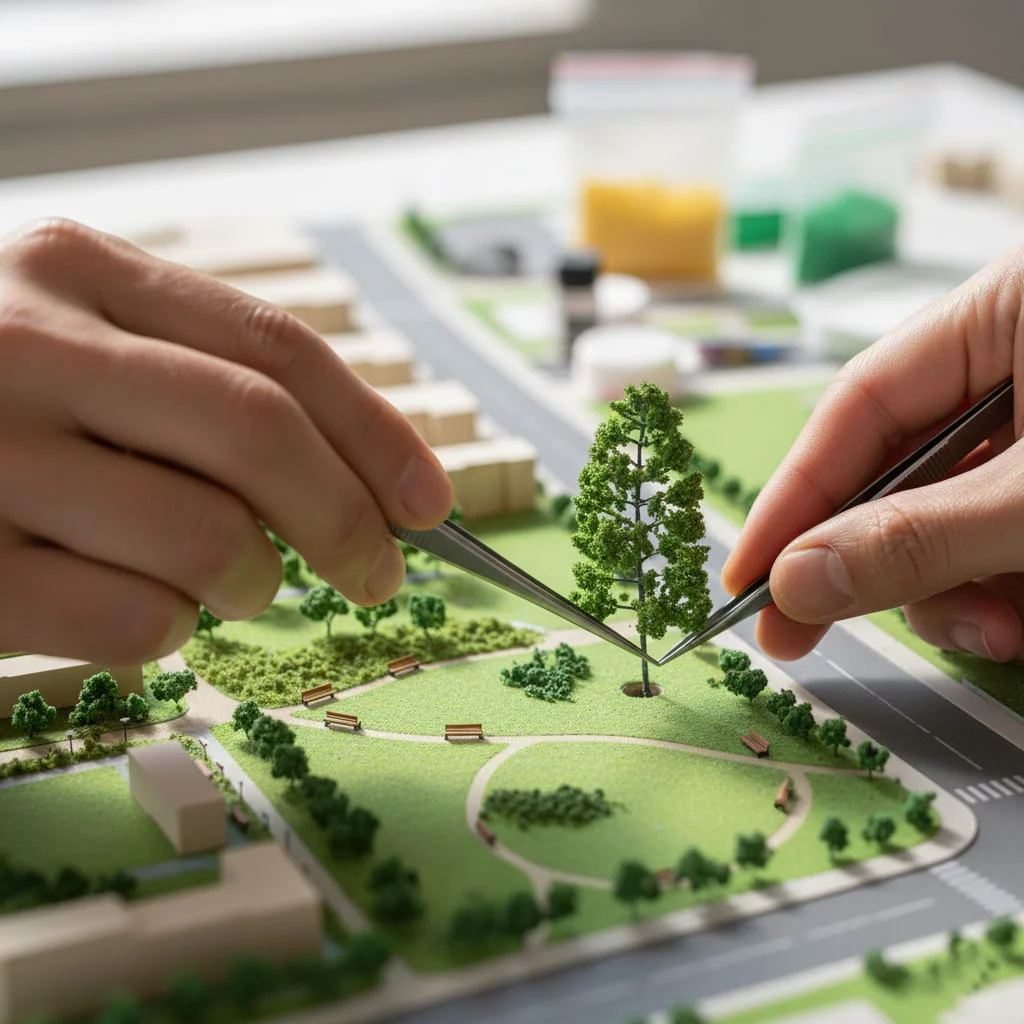
Ένα φάσμα μοντέλων: Τύποι, Κλίμακα, και Προσαρμογή
Δεν δημιουργούνται όλα τα μοντέλα γενικού σχεδίου ίσα. Μπορούν να κυμαίνονται από απλά, εννοιολογικά μοντέλα μπλοκ έως υπερρεαλιστικά, πλήρως διαδραστικές οθόνες. Η σωστή επιλογή εξαρτάται από το στάδιο του έργου, προϋπολογισμός, και απώτερος στόχος. Κατανόηση των διαφορετικών τύπων και, το πιο σημαντικό, ο αντίκτυπος της κλίμακας είναι κρίσιμος.
Ποιοι είναι οι διαφορετικοί τύποι μοντέλων γενικού σχεδίου?
1. Σχετικός με την σύλληψη ή αντίληψη / Μοντέλα μαζικής
Αυτοί είναι οι εργάτες της πρώιμης φάσης σχεδιασμού. Στόχος τους είναι να επικοινωνήσουν τη μεγάλη ιδέα - τη συνολική μορφή, κλίμακα, και χωροταξικές σχέσεις —χωρίς να κολλάμε σε λεπτομέρειες. Είναι ιδανικά για διαγωνισμούς σχεδιασμού και εσωτερικά εργαστήρια.
- Χαρακτηριστικά: Συχνά χρησιμοποιούν ένα μόνο υλικό όπως ξύλο ή παγωμένο ακρυλικό για να δημιουργήσουν ένα καθαρό, ενιαία εμφάνιση. Τα κτίρια παρουσιάζονται ως απλά, συμπαγή μπλοκ.
- Σκοπός: Για να εξερευνήσετε και να επικοινωνήσετε την βασική σχεδιαστική ιδέα και το αστικό κόκκο.
2. Ολόχρωμο, Μοντέλα υψηλής λεπτομέρειας
Αυτό φαντάζονται οι περισσότεροι άνθρωποι όταν σκέφτονται ένα ολοκληρωμένο μοντέλο. Αυτά τα μοντέλα έχουν σχεδιαστεί για να είναι όσο το δυνατόν πιο ρεαλιστικά και αποτελούν το κύριο εργαλείο για το μάρκετινγκ και τις δημόσιες παρουσιάσεις.
- Χαρακτηριστικά: Διαθέτουν ρεαλιστικά χρώματα, υφή, και υλικά. Οι προσόψεις είναι λεπτομερείς, ο εξωραϊσμός είναι πλούσιος και ποικίλος, και στοιχεία περιβάλλοντος (αυτοκίνητα, άνθρωποι) περιλαμβάνονται για να ζωντανέψει τη σκηνή.
- Σκοπός: Να πουλήσει ένα όραμα, κερδίσει την έγκριση του κοινού, και να δώσει στους ενδιαφερόμενους μια πραγματική αίσθηση του ολοκληρωμένου έργου.
3. Διαδραστικά και Ψηφιακά-Υβριδικά Μοντέλα
Αυτά τα μοντέλα αντιπροσωπεύουν την κορυφή της τεχνολογίας κατασκευής μοντέλων. Ενσωματώνουν τη φυσική δεξιοτεχνία με την ψηφιακή διαδραστικότητα για να δημιουργήσουν μια βαθιά συναρπαστική και ενημερωτική εμπειρία.
- Χαρακτηριστικά: Ενσωματώνουν χαρακτηριστικά όπως προγραμματιζόμενο φωτισμό LED, χειριστήρια οθόνης αφής, Επικαλύψεις AR, ή χαρτογράφηση προβολής.
- Σκοπός: Για να δημιουργήσετε ένα αξέχαστο “εκπληκτική επιτυχία” παράγοντας για παρουσιάσεις υψηλού πονταρίσματος, μεγάλα κέντρα πωλήσεων, και δημόσιες εκθέσεις.
Πώς επιλέγετε τη σωστή κλίμακα για ένα μοντέλο Master Plan?
Η κλίμακα ενός μοντέλου είναι η αναλογία του μεγέθους του προς το μέγεθος του πραγματικού. Είναι αναμφισβήτητα η πιο σημαντική απόφαση που ελήφθη στην αρχή της διαδικασίας, καθώς υπαγορεύει το δυνατό επίπεδο λεπτομέρειας και το φυσικό μέγεθος του τελικού μοντέλου. Υπάρχει πάντα ένας συμβιβασμός: μικρότερη κλίμακα (σαν 1:2000) μπορεί να δείξει μια τεράστια περιοχή αλλά με λίγες λεπτομέρειες, ενώ μεγαλύτερης κλίμακας (σαν 1:200) δείχνει απίστευτη λεπτομέρεια αλλά μόνο για μια μικρή περιοχή. Εξερευνούμε αυτήν την κρίσιμη απόφαση στον οδηγό μας για Βρίσκοντας την τέλεια ισορροπία κλίμακας και λεπτομέρειας.
| Εύρος κλίμακας | Τυπική χρήση | Επίπεδο λεπτομέρειας | Παράδειγμα τύπου έργου |
|---|---|---|---|
| 1:5000 – 1:2000 | Mega-City / Περιφερειακός Σχεδιασμός | Χαμηλός. Η εστίαση είναι σε μεγάλες υποδομές, έδαφος, και τις σχέσεις της περιοχής. Τα κτίρια είναι απλά μπλοκ. | Ένα σχέδιο μεταφορών σε όλη την πόλη ή μια στρατηγική περιφερειακής ανάπτυξης. |
| 1:1000 – 1:500 | Μεγάλες Αστικές Αναπτύξεις | Μέσον. Ο “γλυκό σημείο” για πολλά γενικά σχέδια. Τα κτίρια είναι αναγνωρίσιμα, και τα βασικά ορόσημα μπορούν να είναι αναλυτικά. | Μια νέα οικιστική κοινότητα, μια μεγάλη πανεπιστημιούπολη, ή μια κυβερνητική παρουσίαση μιας νέας περιφέρειας. |
| 1:500 – 1:200 | Ακίνητα & Εμπορικά Έργα | Ψηλά. Η εστίαση είναι στον αρχιτεκτονικό χαρακτήρα, άνεσεις, και πώς το έργο ενσωματώνεται με το άμεσο περιβάλλον του. | Μια ανάπτυξη μικτής χρήσης για ένα κέντρο πωλήσεων, ένα επιχειρηματικό πάρκο, ή ένα πολυτελές θέρετρο. |
| 1:200 – 1:100 | Αρχιτεκτονική εστίαση / Ορόσημο | Πολύ ψηλά. Χρησιμοποιείται για την προβολή ενός σινγκλ, εμβληματικό κτήριο μέσα σε ένα γενικό σχέδιο ή ένα εξαιρετικά λεπτομερές τμήμα ενός μεγαλύτερου έργου. | Ένας χαρακτηριστικός ουρανοξύστης, ένα πολιτιστικό κέντρο, ή ένα χαρακτηριστικό όπως η ρόδα του λούνα παρκ Ain Dubai. |

Μοντέλα Master Plan σε Δράση: Παγκόσμιες Μελέτες Περιπτώσεων
Ο καλύτερος τρόπος για να κατανοήσετε τη δύναμη και την ποικιλομορφία των μοντέλων γενικού σχεδίου είναι να δείτε παραδείγματα από τον πραγματικό κόσμο. Οι ακόλουθες περιπτωσιολογικές μελέτες, προέρχονται από έργα σε όλο τον κόσμο, επισημάνετε πώς τα μοντέλα επιλύουν συγκεκριμένες προκλήσεις και επιτυγχάνουν απίστευτα αποτελέσματα.
| Όνομα έργου | Βασική πρόκληση / Σκοπός | Ο ρόλος του μοντέλου & Βασικό χαρακτηριστικό | Μάθημα που αντλήθηκε |
|---|---|---|---|
| Μοντέλο Πολεοδομίας της Ντόχα | Να απεικονίσει ολόκληρο το μελλοντικό σχέδιο ανάπτυξης μιας πρωτεύουσας. Το τεράστιο μέγεθος ήταν η κύρια πρόκληση. | Ένα πρωτόγνωρο 1:1000 μοντέλο κλίμακας 26×26 μέτρα. Χτίστηκε μέσα 131 τμήματα για αεροπορικές μεταφορές και συναρμολογούνται επιτόπου. | Για μεγάλα έργα, Η εφοδιαστική και η αρθρωτή κατασκευή είναι εξίσου σημαντικές με την ίδια την κατασκευή μοντέλων. |
| Μοντέλο Πολεοδομίας Κωνσταντινούπολης | Για να δημιουργήσετε ένα αξέχαστο, δυναμική παρουσίαση του μέλλοντος της πόλης για την προώθηση της διεθνούς εικόνας της. | Το μοντέλο συγχρονίστηκε με προβολέα, δημιουργώντας μια υβριδική φυσική-ψηφιακή εμπειρία βίντεο που παρουσίαζε την αστική διάταξη. | Η ενσωμάτωση τεχνολογίας όπως η χαρτογράφηση προβολής μπορεί να μετατρέψει ένα στατικό μοντέλο σε ένα ισχυρό εργαλείο αφήγησης. |
| Πολιτιστική Περιοχή West Kowloon του Χονγκ Κονγκ | Να κερδίσει έναν άκρως ανταγωνιστικό διεθνή διαγωνισμό σχεδιασμού έναντι εταιρειών αρχιτεκτονικής παγκόσμιας κλάσης. | Ένα λεπτομερές και οπτικά συναρπαστικό μοντέλο δημιουργήθηκε για τον Foster + Συνεργάτες, που έπαιξε καθοριστικό ρόλο στην τελική τους παρουσίαση και στην τελική νίκη. | Ένα μοντέλο υψηλής ποιότητας είναι μια άμεση επένδυση για να κερδίσετε έργα και να εξασφαλίσετε προμήθειες. |
| Μοντέλο ρόδας λούνα παρκ Ain Dubai | Για να παρουσιάσω ένα σινγκλ, εικονική, ορόσημο παγκόσμιου ρεκόρ και δημιουργούν παγκόσμιο ενθουσιασμό και επενδύσεις. | Μια μεγάλη κλίμακα (1:100) μοντέλο επικεντρώθηκε στην απίστευτη λεπτομέρεια της ίδιας της ρόδας, καθιστώντας τον ήρωα της παρουσίασης. | Όταν έχετε ένα εμβληματικό κεντρικό κομμάτι, Η εστίαση των λεπτομερειών του μοντέλου σε αυτό το στοιχείο μπορεί να έχει τεράστιο αντίκτυπο. |
| Μοντέλο MJL Dubai | Να αντιπροσωπεύει μια εξέλιξη που συνδύασε τη σύγχρονη πολυτέλεια με την παραδοσιακή αραβική αρχιτεκτονική. | Η προσεκτική επιλογή υλικού ήταν το κλειδί. Τα σύγχρονα κτίρια κατασκευάστηκαν από πλαστικό και χάλυβα, ενώ οι παραδοσιακές κατασκευές χρησιμοποιούσαν υλικά που μιμούνταν την κίτρινη λάσπη. | Η υλικότητα είναι ένας ισχυρός τρόπος για να μεταδοθεί ο χαρακτήρας και το πολιτιστικό πλαίσιο ενός έργου. |
Σύναψη
Από ένα στρατηγικό σύνολο ερωτήσεων σε έναν πίνακα σε ένα συγκλονιστικό, φωτιζόμενο μοντέλο που γεμίζει ένα δωμάτιο, το ταξίδι ενός γενικού σχεδίου είναι ένα ταξίδι μεταμόρφωσης. Είδαμε ότι το μοντέλο του γενικού σχεδίου είναι πολύ περισσότερο από ένα απλό αντίγραφο; είναι ένα κρίσιμο όργανο όρασης, ανακοίνωση, και τη λήψη αποφάσεων. Έχει εξελιχθεί από στατικό αντικείμενο σε δυναμικό, διαδραστική συσκευή που μπορεί να πει μια ιστορία, επικυρώστε ένα σχέδιο, και εμπνέουν εμπιστοσύνη.
Στον πολύπλοκο κόσμο της αστικής ανάπτυξης και της αρχιτεκτονικής, η διαύγεια είναι το πιο πολύτιμο αγαθό. Ένα καλά εκτελεσμένο μοντέλο γενικού σχεδίου παρέχει αυτή τη σαφήνεια. Είναι μια επένδυση στην κατανόηση, δέσμευση για συνεργασία, και μια γέφυρα για ένα απτό μέλλον. Μετατρέποντας ένα αφηρημένο όραμα σε κοινή πραγματικότητα, Αυτά τα μοντέλα μας δίνουν τη δυνατότητα να κάνουμε τους ενημερωμένους, στοχαστικές αποφάσεις που θα διαμορφώσουν τις κοινότητες και τις πόλεις μας για τις επόμενες γενιές.
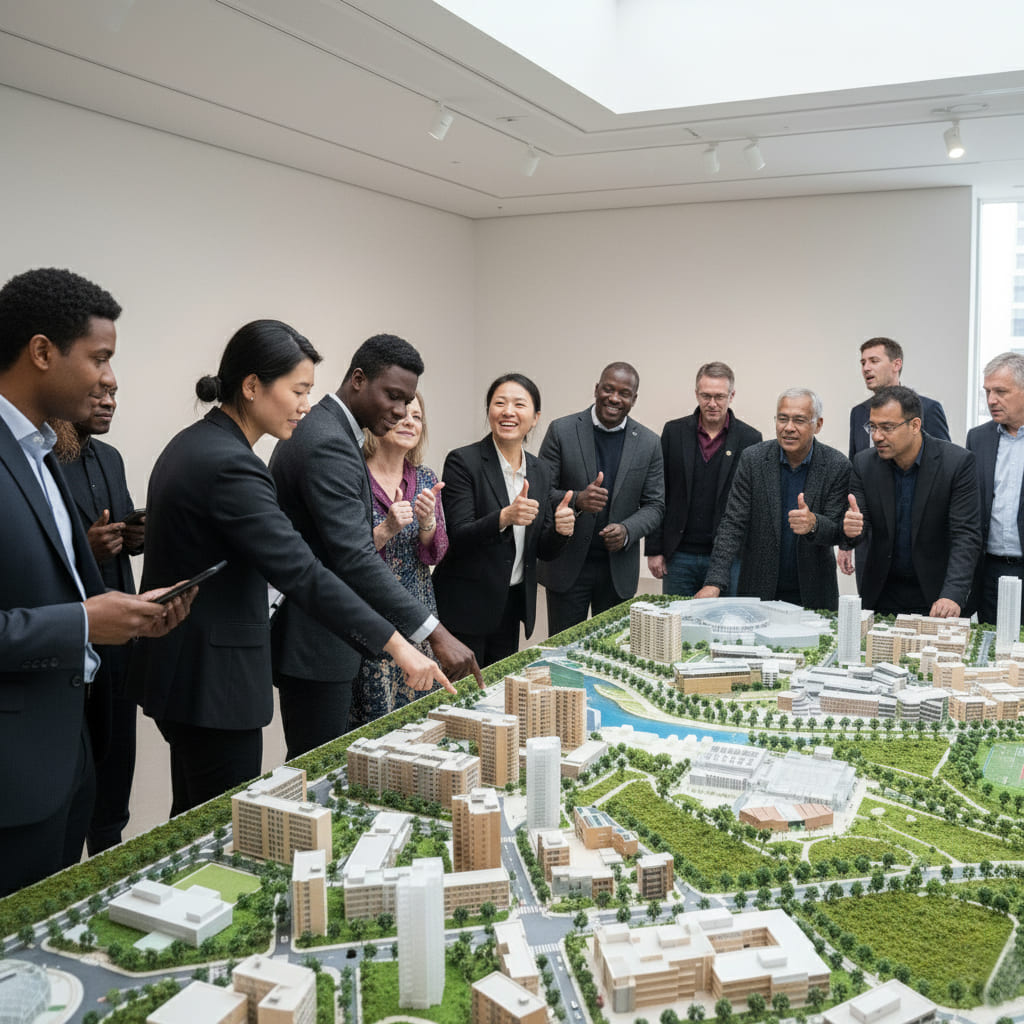
Συχνές ερωτήσεις (Συχνές ερωτήσεις)
Πόσο κοστίζει ένα μοντέλο γενικού σχεδίου?
Το κόστος ενός μοντέλου γενικού σχεδίου ποικίλλει δραματικά με βάση διάφορους παράγοντες: μέγεθος, κλίμακα, Επίπεδο λεπτομέρειας, και την πολυπλοκότητα οποιασδήποτε διαδραστικής τεχνολογίας. Ένα απλό εννοιολογικό μοντέλο μάζας μπορεί να κοστίσει δεκάδες χιλιάδες δολάρια, Ενώ ένα μεγάλο, πολύ λεπτομερής, Το διαδραστικό μοντέλο για ένα μεγάλο κέντρο πωλήσεων μπορεί να κοστίσει εκατοντάδες χιλιάδες, και μεγάλα έργα όπως το μοντέλο της πόλης της Ντόχα μπορεί να ανέλθουν σε εκατομμύρια.
Πόσος χρόνος χρειάζεται για την κατασκευή ενός μοντέλου γενικού σχεδίου?
Ο χρόνος παραγωγής εξαρτάται εξ ολοκλήρου από την πολυπλοκότητα του μοντέλου. Με βάση τα παραδείγματα του πραγματικού κόσμου, ένα μικρότερο, μπορεί να χρειαστεί πιο εστιασμένο μοντέλο 3-4 εβδομάδες. Ένα μεγάλο, λεπτομερές γενικό σχέδιο απαιτεί συνήθως 2-3 μήνες. Ένα τεράστιο, έργο κλίμακας πόλης μπορεί να πάρει 6 μήνες ή και περισσότερο από την αρχή μέχρι το τέλος. Αυτό είναι ένα ουσιαστικό μέρος της διαδικασίας που καλύπτουμε Ο Βήμα-Βήμα Οδηγός μας.
Ποια είναι η διαφορά μεταξύ ενός μοντέλου γενικού σχεδίου και ενός αρχιτεκτονικού μοντέλου?
Η βασική διαφορά είναι η εστίαση και η κλίμακα. ΕΝΑ μοντέλο γενικού σχεδίου δείχνει τη μεγάλη εικόνα: η σχέση μεταξύ πολλαπλών κτιρίων, ζώνες, ανοικτοί χώροι, και υποδομή. Σκοπός του είναι να δείξει το πλαίσιο. Ενα αρχιτεκτονικό μοντέλο επικεντρώνεται σε ένα μεμονωμένο κτίριο ή σε μια μικρή ομάδα κτιρίων, παρουσιάζοντας το συγκεκριμένο σχέδιο τους, υλικά, και λεπτομέρειες σε πολύ μεγαλύτερη κλίμακα.
Τι λογισμικό χρησιμοποιείται για το σχεδιασμό μοντέλων βασικών σχεδίων?
Χρησιμοποιείται μια σουίτα λογισμικού. Αυτόματο και Ερεθίζω χρησιμοποιούνται για τα αρχεία αρχιτεκτονικού κτιρίου. Ρινόκερος και Ακρίδα χρησιμοποιούνται συχνά για πολύπλοκα, παραμετρικά σχήματα. Civil 3D χρησιμοποιείται για την ενοποίηση δεδομένων υποδομής και εδάφους. Τελικά, 3ds max ή παρόμοια προγράμματα χρησιμοποιούνται για τη δημιουργία του τελικού, λεπτομερές τρισδιάστατο ψηφιακό μοντέλο που καθοδηγεί τη διαδικασία κατασκευής.
Μπορεί να ενημερωθεί ένα μοντέλο γενικού σχεδίου?
Ναί, και αυτό είναι ένα βασικό πλεονέκτημα της σύγχρονης κατασκευής μοντέλων. Χρησιμοποιώντας μια σπονδυλωτή προσέγγιση κατασκευής, όπου το μοντέλο είναι ενσωματωμένο ξεχωριστά, αλληλοσυνδεόμενα τμήματα, είναι δυνατή η ενημέρωση ή η αντικατάσταση συγκεκριμένων περιοχών. Αυτό είναι ιδιαίτερα χρήσιμο για σταδιακές εξελίξεις, όπου μπορούν να προστεθούν νέα τμήματα στο μοντέλο καθώς σχεδιάζονται και κατασκευάζονται.


